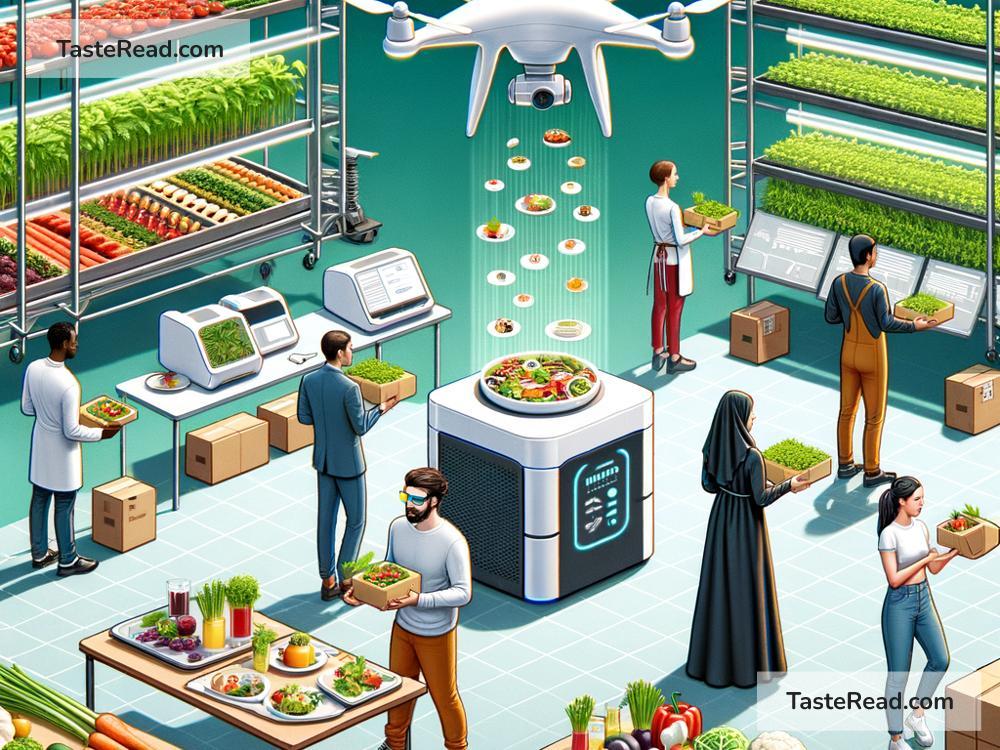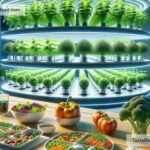The Future of Food Accessibility: A Brighter Tomorrow for Everyone
Food is one of life’s most essential needs. Yet, millions of people around the world don’t have enough food to eat. Hunger and food insecurity—a situation where people don’t know where their next meal will come from or lack access to nutritious food—are serious problems that need urgent solutions. As technology, innovation, and global cooperation improve, the future of food accessibility looks promising. Let’s explore how changes today will shape a better tomorrow where everyone, everywhere, can access enough healthy food.
Current Challenges in Food Accessibility
Despite advances in agriculture and food production, not everyone has access to food. This is because food accessibility is affected by many factors, such as poverty, climate change, conflict, and inequalities in distribution. For example:
- Poverty: Many people simply can’t afford healthy food. Even when food is available in stores, it may be too expensive for low-income families.
- Climate Change: Extreme weather like droughts, floods, and rising temperatures can destroy crops, making food scarce and expensive.
- Conflict: War and political unrest can disrupt farming and supply chains, leaving communities without enough food.
- Urbanization: As cities grow, farmland shrinks, and the cost of fresh produce increases.
Solving these challenges will require innovative solutions and cooperation among governments, businesses, and communities.
How Technology Can Improve Food Accessibility
Technology is already changing how we produce, distribute, and consume food. In the future, it will play an even bigger role in making food accessible to everyone. Here are some ways technology is improving food accessibility:
-
Precision Farming: Farmers now use tools like drones, sensors, and artificial intelligence (AI) to monitor crops. Precision farming reduces waste and increases production, leading to more food at lower costs.
-
Vertical Farming: Instead of relying on traditional farmland, vertical farms grow crops in stacked layers inside buildings. These farms use less land and water and can bring fresh produce to cities, where most people live.
-
Lab-Grown Food: Scientists can produce meat, dairy, and even seafood in laboratories without animals. This can reduce environmental harm, lower costs, and make food more accessible for everyone.
-
Blockchain for Food Distribution: Blockchain technology can track food from farms to stores, ensuring efficiency and reducing waste. For example, if food is wasted less during transport, there is more available for everyone.
-
Mobile Apps for Farmers: Simple apps can connect small farmers in rural areas to markets and buyers. With better access to information, farmers can sell their crops more easily, increasing the supply of food.
Innovations in Food Systems
In addition to technology, governments and organizations around the world are working to build more equitable food systems. These systems aim to make sure food is affordable, nutritious, and accessible to everyone.
-
Universal School Meal Programs: Some countries are improving food accessibility by offering free or low-cost meals at schools. This ensures children get nutritious food, even if their families can’t afford it.
-
Community Gardens: Communities are creating local gardens where neighbors can grow their own fruits and vegetables. These gardens are not only a source of food but also a way to foster cooperation and education about healthy eating.
-
Food Recovery Initiatives: In many places, food that would normally be wasted is being collected and distributed to people who need it. This includes unsold food from supermarkets and restaurants.
-
Affordable Food Options: Companies are working to produce cheaper yet nutritious food, like plant-based proteins or fortified snacks. These options can help people access healthy food without overspending.
Tackling Inequalities in Food Distribution
One of the biggest challenges with food accessibility is ensuring that food reaches everyone equally. Even when there is enough food in the world, it isn’t always distributed fairly. For example, wealthy countries often have an abundance of food, while poorer nations struggle with shortages.
Organizations like the United Nations are advocating for fairer food systems. Global agreements can help make sure food is distributed to regions affected by famine or poverty. For example, international food aid programs deliver emergency supplies to areas where people face hunger.
Additionally, systems are being developed to combat inequalities within countries. Delivery networks for rural areas, subsidies for small farmers, and fair employment practices are all helping to break down barriers that keep some people from accessing food.
What Can We Do?
While governments and businesses play a big role in improving food accessibility, individuals can also contribute to the future of food. Here are some small steps you can take:
- Reduce food waste by buying only what you need and storing food properly.
- Support local farms by purchasing your produce locally.
- Donate to food banks or volunteer with organizations that fight hunger.
- Advocate for better policies that make food affordable for low-income families.
Every effort counts in creating a world where no one has to go hungry.
Final Thoughts
Though the challenges to food accessibility are significant, the future holds hope. With advancements in technology, innovative farming practices, better distribution systems, and global cooperation, we are moving toward a world where everyone has access to enough healthy food.
It’s important to remember that food accessibility isn’t just about growing more food. It’s also about making sure people can afford and access food in their everyday lives. By working together—scientists, farmers, businesses, governments, and communities—we can build a future where food is a right, not a privilege.
Let’s continue to take steps today toward a better tomorrow, because no one should ever have to worry about their next meal.


